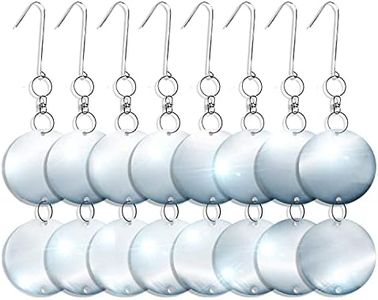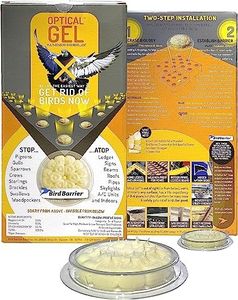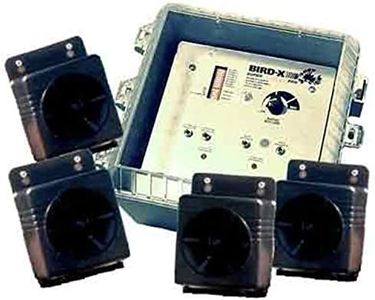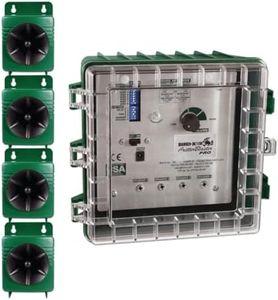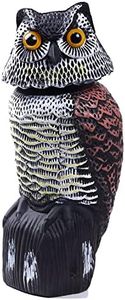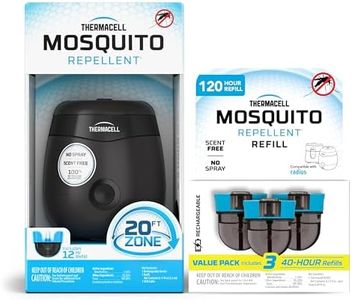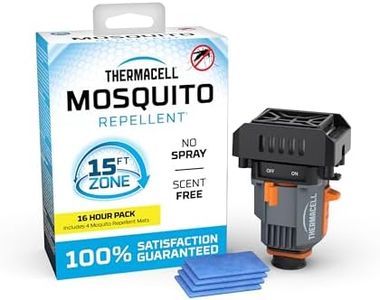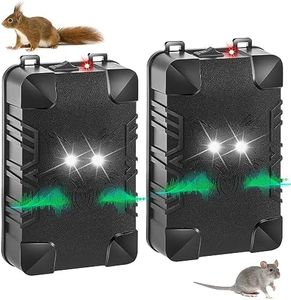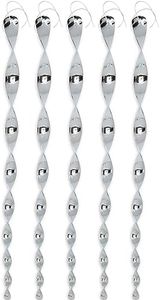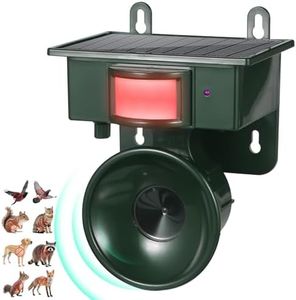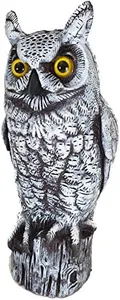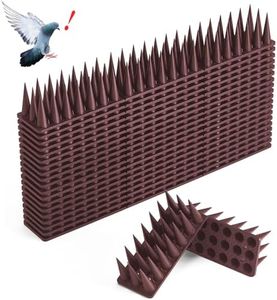10 Best Bird Repellents 2025 in the United States
Our technology thoroughly searches through the online shopping world, reviewing hundreds of sites. We then process and analyze this information, updating in real-time to bring you the latest top-rated products. This way, you always get the best and most current options available.

Our Top Picks
Winner
Bird Barrier Optical Gel 24 Pack | Natural Multisensory Bird Deterrent | Easy Installation | Discreet Appearance | Long-Lasting Solution | Repels Birds on Roofs, Beams Signs, Soffits, Ledges, and More
Most important from
224 reviews
The Bird Barrier Optical Gel is a natural, multisensory bird deterrent designed to prevent birds from landing on various surfaces. Using a combination of smell, sight, and touch, this product offers an innovative and humane way to protect your property from bird damage. One of its standout features is the ease of installation; no tools are required, and it can be applied within minutes using a small dab of silicone. This makes it an excellent option for those looking for a quick and straightforward bird repellent solution.
It's effective against a wide range of bird species, including pigeons, seagulls, woodpeckers, and more, making it versatile for different environments and bird pressures. Each pack contains 24 gel discs that can cover multiple areas such as roofs, balconies, railings, and windowsills. Safety and environmental impact are crucial considerations, and this product excels in that regard, being made from all-natural ingredients like citronella, mint oil, agar, and beeswax. These components create a sticky texture and scent that are unpleasant to birds but safe for the environment.
On the downside, thorough cleaning of the installation site is necessary to remove bird pheromones, which might be an extra step for some users. Additionally, while the product is effective, its longevity and how frequently it needs to be replaced could be a concern for some users. The cost-effectiveness should be evaluated based on the extent of the bird problem and the areas needing coverage. In summary, the Bird Barrier Optical Gel offers a practical, humane, and easy-to-use bird repellent solution, though it may require some initial site preparation and consideration of replacement frequency.
Most important from
224 reviews
BIRD X BROADBAND PRO (ULTRASONIC & SONIC)
Most important from
5 reviews
The Bird X Broadband Pro uses both sonic and ultrasonic sounds to repel birds, covering a large area of up to 6 acres, making it suitable for medium to large outdoor spaces like gardens or small farms. Its weather-resistant casing ensures it can handle outdoor conditions without damage, so you don’t have to worry about frequent replacements due to weather. Installation support is included, which helps users set it up correctly even if they’re not experienced with such devices.
The product is electric and fairly lightweight at 10 pounds, with a modern design in green color. While it targets sparrows specifically, the combination of sound technologies might deter other small birds as well. Since it uses sound waves, it’s a safer choice environmentally compared to chemical repellents, and it doesn’t rely on harmful substances.
Priced moderately, it offers good value considering the coverage area and included installation help. For those seeking a chemical-free, weather-proof bird repellent with effective coverage and expert setup guidance, this model is a strong option.
Most important from
5 reviews
Bird-X Critter Blaster PRO, Sonic Animals and Birds Decoy Device, Control Panel with 4 Speakers, Emits 8 Digitally Recorded Sounds, Easy to Install, Covers 6 Acres, 2–10 kHz Frequency
Most important from
9 reviews
The Bird-X Critter Blaster PRO is a sonic bird and animal repellent that uses digitally recorded sounds to drive away a wide range of critters including birds, deer, raccoons, and more. One of its major strengths is its extensive coverage area, effectively covering up to 6 acres, making it ideal for large spaces such as airports, vineyards, and fields. The device emits sounds in the 2–10 kHz frequency range, which are specifically designed to irritate and disorient animals, ensuring they stay away. This approach is humane as it avoids the use of harmful chemicals or traps, making it a safer option for the environment and non-target animals.
Installation is straightforward, aided by its weather-resistant control box, four directional speakers, and included wiring and adaptors. This makes it relatively easy to set up and start using, even for those who may not be technically inclined. However, there are a few drawbacks to consider. The effectiveness of sonic devices can vary depending on the specific animal and environmental conditions. Some animals may become habituated to the sounds over time, potentially reducing the device’s long-term effectiveness.
Additionally, while it is a powerful device, the volume of 105–110 dB may be disruptive in residential areas or spaces where noise pollution is a concern. Cost-wise, it is an investment, but considering its extensive coverage and potential savings on damage and cleanup, it could be cost-effective for larger properties. Users should weigh these factors based on their specific needs and environment.
